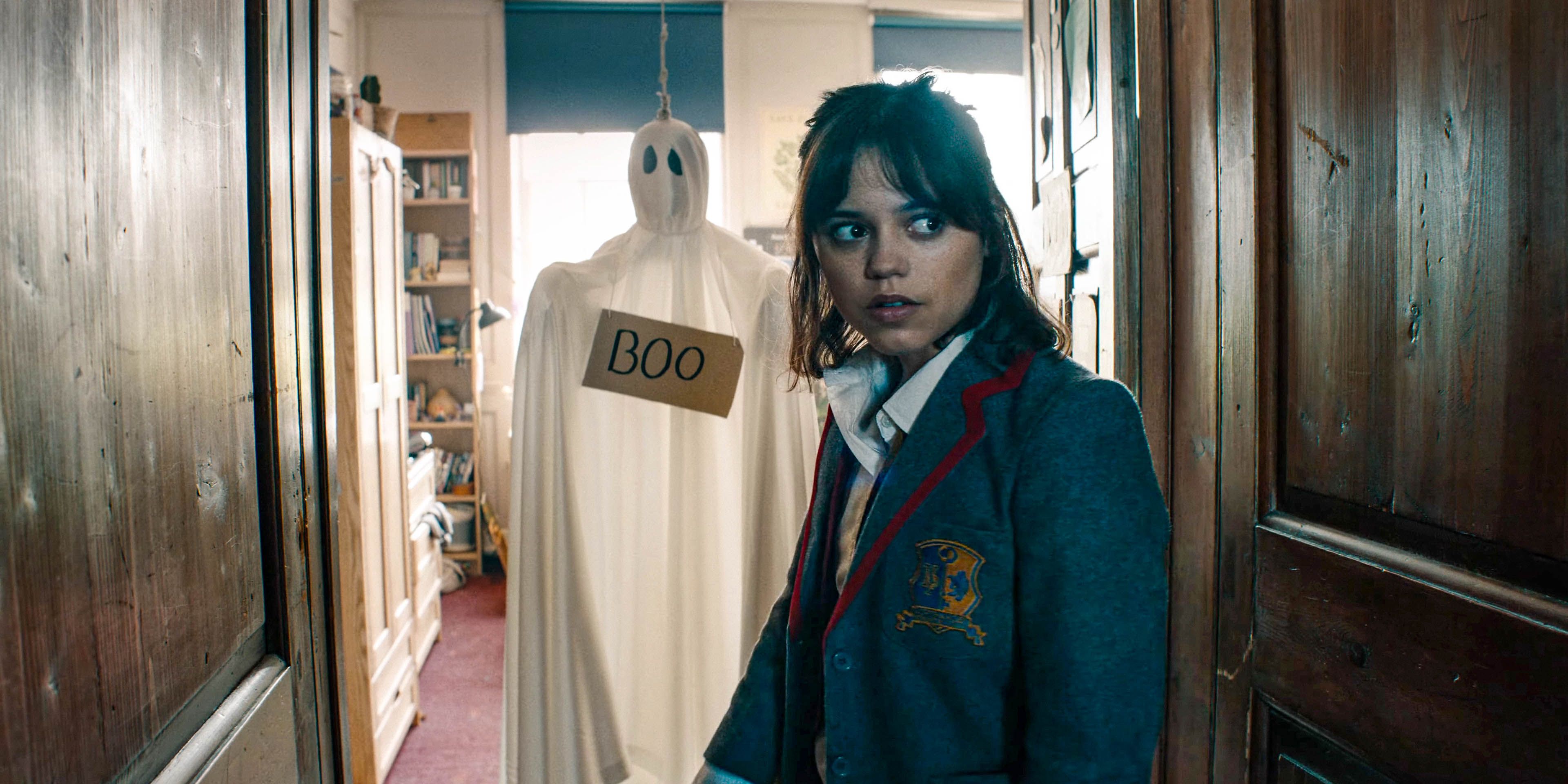There’s something magical about Beetlejuice. Revisiting it for the first time in years made me wonder why my sister and I had it in such regular rotation throughout our childhood – turns out, it was all us. My parents’ opinions on it ranged from lightly positive (Dad) to fairly negative (Mom), but we couldn’t get enough of it. And that makes sense to me. Beetlejuice is more than just creatively odd. It’s whimsical enough to feel safe, but also sexual enough to feel dangerous. Watch it young, and it’s like peeking into a world you aren’t supposed to see yet.
The new sequel, Beetlejuice Beetlejuice, is missing that edge. It’s tamer, more straightforward, and far more willing to hold your hand as you traverse the story. Put the two films side-by-side, and you’ll see traces of director Tim Burton’s journey to the mainstream over the intervening 36 years.
You’ll also see that a certain spark survived the trip. Burton has credited this experience with rekindling his love of filmmaking, and I think there’s something to that. Beetlejuice Beetlejuice is very fun, funny, and full of imaginative moments. At the Venice Film Festival, where Beetlejuice Beetlejuice premiered as the opening film, it kept my audience laughing throughout, even earning one burst of spontaneous applause. I have to imagine the energy in the room was fueled by the sense of rediscovered joy I felt watching it.
Beetlejuice 2 Is A Legacy Sequel In All The Right Ways
And I Hope Hollywood is paying attention
Today’s audiences are used to seeing once-beloved properties dug up and filled with hot air until their awkward, uncanny movements slightly resemble life, and Beetlejuice Beetlejuice is certainly guilty of cashing in on the nostalgia bubble before it pops. But going back to the well doesn’t have to be a soulless exercise. Familiarity is an opportunity, when approached like one.
It’s no small thing for a legacy sequel to have a filmmaker at the helm who is actively revisiting their own legacy.
Screenwriters Alfred Gough and Miles Millar, who Burton collaborates with on Wednesday, understand that, and they revisit the Deetz family by inverting the 1988 original. Lydia (Winona Ryder), once a teenage outcast who resisted her father’s schemes to cash in on her gift of sight, is now a TV medium and ghost hunter of considerable fame. Delia (Catherine O’Hara) is back in the city as a successful artist, while quiet-loving Charles travels to bird-watch in far-flung places.
Familiar dynamics return, also distorted. Lydia’s daughter, Astrid (Jenna Ortega), loves the macabre, but she’s not truly a loner. She’d probably be well-liked by her peers if it wasn’t for being branded by her mother’s celebrity. She detests Rory (Justin Theroux), her would-be step-father, but as the central couple, Rory and Lydia have none of the love of either the Maitlands or the Deetzes. (In fact, Rory is more Beetlejuice-coded than anything). And while the family is once again drawn to Wind River by a funeral, they’re returning to sell their house, not buy it.
This same-same-but-different approach is felt throughout Beetlejuice Beetlejuice — and it is welcome. It proves you can fill a movie like this with callbacks to the original and still make it feel like its own, unified experience. And it’s no small thing for a legacy sequel to have a filmmaker at the helm who is actively revisiting their legacy. There’s kismet between Burton’s situation and grown-up Lydia’s, and there are moments that feel like nods to his other work, as if he’s grappling with his career. It’s no full-on interrogation, but it’s enough to give this exercise some weight.
Beetlejuice Beetlejuice’s Cast Bring Everything To Life
And two returning stars are the movie’s lifeblood
While there’s strength in approaching a sequel as an adaptation, being so tethered to the original comes at a cost. For one, it suffers by visual comparison; Beetlejuice Beetlejuice is full of wonderful, inventive design and effects work, but the cinematography and framing are more functional than expressive. And it’s no wonder this film lacks the original’s wildness, both visually and narratively, when every choice is made with the original in mind. The very endeavor comes with guardrails that Burton & Co. weren’t limited by the first time around.
But the Beetlejuice Beetlejuice cast is its lifeblood, and everyone was clearly feeding on whatever energy Burton was putting out on set. Faced with a much faster pace, the ensemble work in unison to keep the ball up comedically, and they fill their performances with as much weird characterization as the design approach demands.
Watching these lauded performers is always a pleasure, but they also understand this project the best; their scenes are the closest the sequel gets to how its predecessor felt.
This world comes to life because they bring it to life, despite some being disadvantaged by the script. Ryder and Ortega are the most burdened with drama, which isn’t this movie’s strength, and the fact that it all holds together is a testament to their work. Monica Bellucci and Willem Dafoe’s characters, both essentially bits, are somewhat undercut by being over-explained.
That puts Michael Keaton and Catherine O’Hara right in that sweet spot: full-bodied supporting characters free to play. Beetlejuice and Delia are deployed just the right amount, each injecting the movie with their own flavor of chaos whenever things risk feeling stale. Watching these lauded performers is always a pleasure, but they also understand this project the best; their scenes are the closest the sequel gets to how its predecessor felt. But chasing that singular tone would’ve been folly. It’s better I can say that Beetlejuice Beetlejuice does its own thing – and that, more often than not, it works.
Beetlejuice Beetlejuice premiered at the Venice Film Festival. The film is 104 minutes long and rated PG-13 for violent content, macabre and bloody images, strong language, some suggestive material and brief drug use. It will release in US theaters on September 6.


